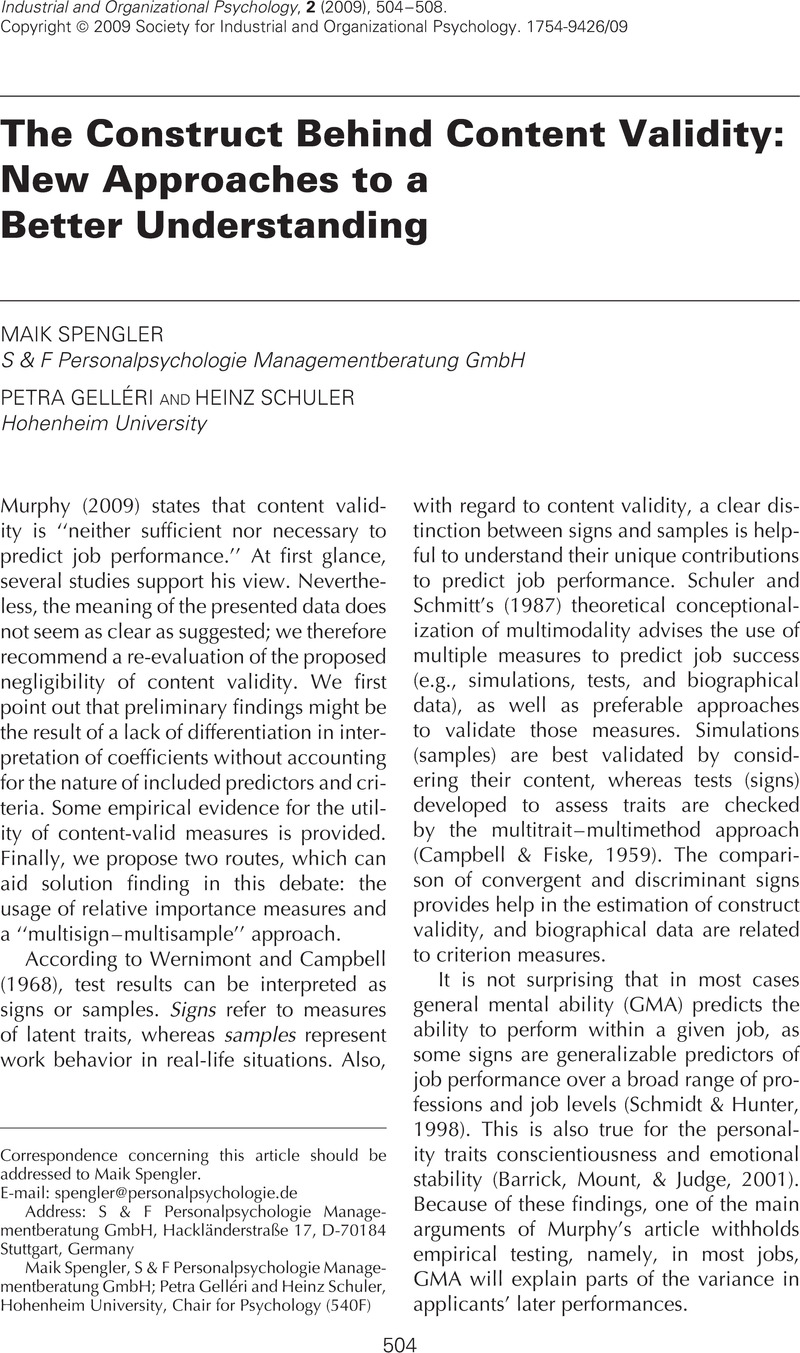Crossref Citations
This article has been cited by the following publications. This list is generated based on data provided by Crossref.
Murphy, Kevin R.
2009.
Is Content-Related Evidence Useful in Validating Selection Tests?.
Industrial and Organizational Psychology,
Vol. 2,
Issue. 4,
p.
517.
Fisher, David M.
Milane, Christopher R.
Sullivan, Sarah
and
Tett, Robert P.
2021.
A Critical Examination of Content Validity Evidence and Personality Testing for Employee Selection.
Public Personnel Management,
Vol. 50,
Issue. 2,
p.
232.



